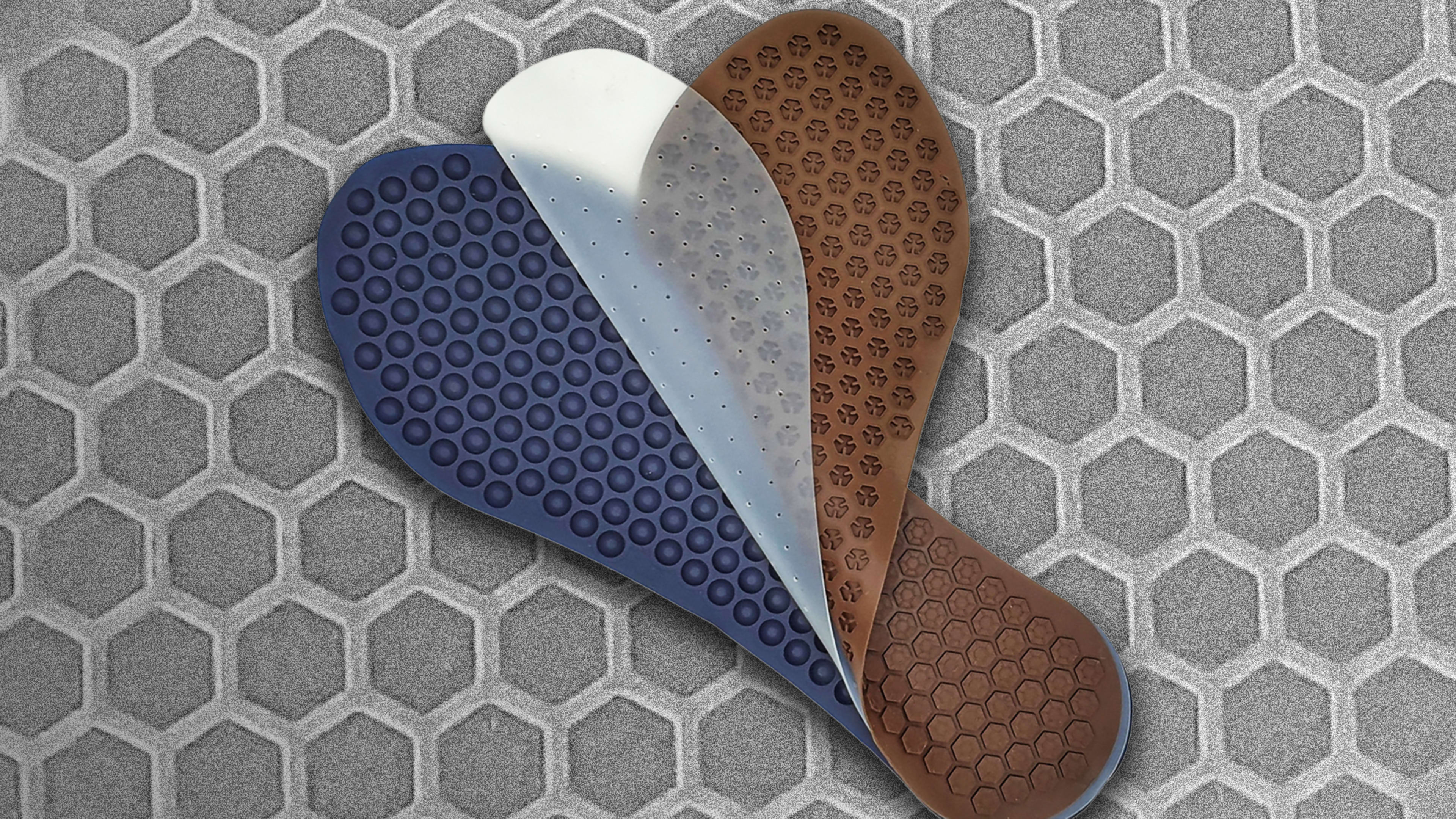In 2018, Bruno Aubert was given a challenge: Design something—anything—to keep his friend’s feet warm while working at a cold-storage warehouse. A materials engineer who had previously built products for the U.S. Navy and NASA, Aubert set out to design soles that would keep his friend’s feet warm with no batteries and no electricity.
Then he realized, if he could warm somebody’s feet, then he could cool them, too. In November 2022, the French company Solecooler was born, and with it came Climfeet—a 79-euro ($87) thermodynamic reversible insole that can warm your feet by up to 4 degrees Celsius (6.3 degrees Fahrenheit) and cool them by 3.5 degrees Celsius (7 degrees Fahrenheit). All you have to do is pick a side, insert it in your shoe, and walk (or run).
Climfeet recently won an ISPO award, which is awarded to particularly innovative, high-performing, or ecological products. With it, Solecooler is targeting athletes who train on wintry terrain or hot surfaces, as well as construction workers and anyone else working in extreme temperatures. The insoles consist of three layers. The outer two are made of silicone and lined with a thin sheet of copper for better thermal conductivity. The middle layer consists of tiny nozzles that will make more sense in a moment.
The insoles come with two distinct sides: the cooling side (in blue) looks like bubble wrap and counts 260 air-filled hemispheres that are soft and easily compressible. The warming side (in brown) resembles a honeycomb wafer, with 260 three-dimensional hexagons that are pretty stiff and can’t really be compressed.
Solecooler CMO Romain Deixonne explains that the hemispheres and the hexagons are linked by tiny nozzles that help move the air from one side to the other. When you step on the sole, the air from the blue hemispheres is compressed into the brown hexagons, creating a localized heating effect. When you lift your foot from the insole, the air expands back into the hemispheres, creating a cooling effect. Wearers only feel the effect corresponding to the side that’s in contact with their feet.
It took the team three years of R&D to develop the design. First, they tried to simulate the effect on a 3D model, but with silicone being so pliable, most 3D models had too many variables for a conclusive result. Then, the team built five separate molds (at about $20,000 each) until they landed on the right configuration. They tested the design in cold weather with 30 athletes. Some ran with regular insoles, some with Climfeet insoles, and others with “placebo insoles.” To help the team quantify the results more objectively, each participant also wore tiny temperature sensors on the soles of their feet.
About 50% of the athletes wearing the Climfeet insoles felt an actual difference, but 50% of them did not. Yet, here’s the pickle: That second group may not have felt the difference, but their temperature sensors did register a change in degrees. According to Deixonne, part of what might explain the discrepancy is that our feet have fewer thermal receptors than the rest of our bodies, and the thermal difference is so gradual it may not always be actively felt by the user.
Solecooler sent me a pair to test, and I found myself squarely in the second category of users who didn’t feel a difference. This past weekend, I tested the insoles in a pair of sneakers, biked somewhere, walked for two consecutive hours, then biked home without ever registering a change of temperature on my feet. When I told Deixonne about my experience, he asked how hot it was that day because the user is more likely to feel the difference in extreme temperatures, he said, and told him it was “only” 75 degrees the day I tried them.
The potential for a heating and cooling insole seems big. With no battery or power to rely on, the insoles are easy to maintain (they’re washable!) and require zero energy to operate. Unlike other options on the market, they don’t have to be recharged, and they can last as long as you keep walking in them. Maybe I picked the one summer day in New York City that wasn’t smothered by a heat wave. Or maybe the differential in temperatures is too subtle for me to feel a marked difference.
Solecooler is currently working on another 3D model with a third-party organization. If this one works, it could help the team improve on the insoles so they would warm your feet not by 4 degrees Celsius but by 10, and cool them not by just 3.5 degrees Celsius but by 9. This kind of difference might be too uncomfortable for ordinary people, but Deixonne says it could make a difference for particular groups, including firefighters, and the military.
I guess for now I’ll stick with my Birkenstocks and try the Climfeet insoles again when the temp soars well above that 75-degree day. And, unfortunately, that shouldn’t be too long.
Recognize your brand’s excellence by applying to this year’s Brands That Matter Awards before the final deadline, June 7.
Sign up for Brands That Matter notifications here.
